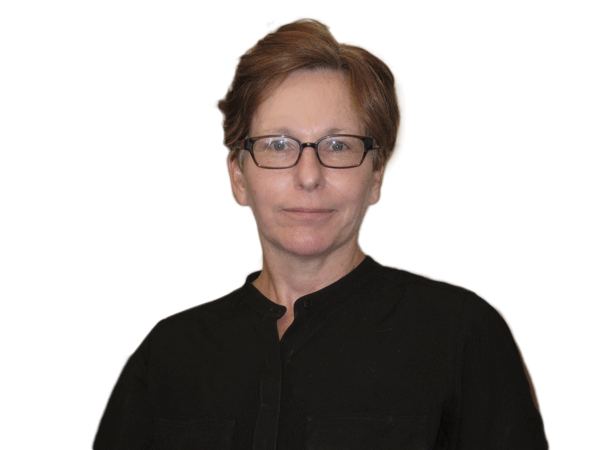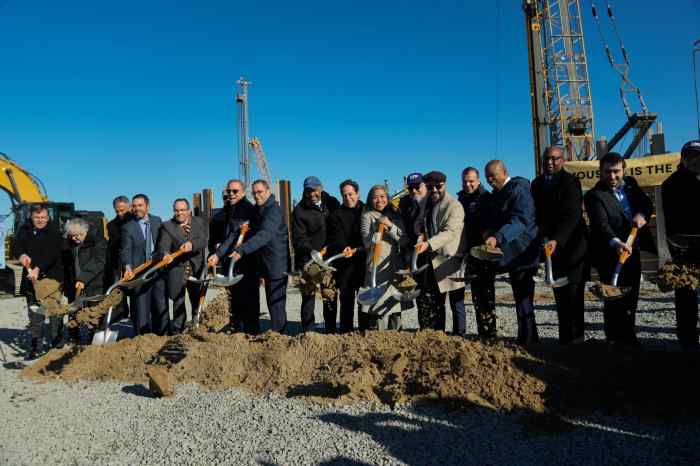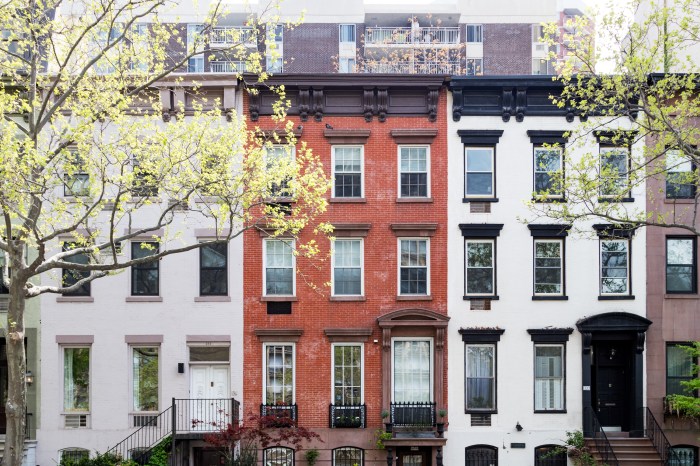
Gina Gibney has devoted herself to the Downtown dance scene since 1991 when she started her first studio at 890 Broadway in Flatiron. She has since expanded. Now, Gibney Dance has taken over the former Dance New Amsterdam space at 280 Broadway near City Hall, and is renovating it. Gibney sat down with Downtown Express on Thurs., Sept 4, to talk community, choreography and construction.
Interview has been condensed and edited.
—Dusica Sue Malesevic
You’ve expanded from one studio to three to eight. Why take on 280 Broadway?
There are some practical reasons for us and there’s the larger rationale for the [dance] field. There are many things that we were not really able to do at 890 Broadway given the profile of the building. Within this new configuration, we’re able to hone 890 Broadway to be a choreographic center. It is not a good place for really large classes, for really large public assemblies, for performances. So this did give us the opportunity to venture into those areas that we’ve always been interested in. I think there was a certain amount of confidence in our organization because we had managed to do these expansions [before].
I, for one, and I think that I speak for the field, did not want to see this space lost. So there was a sort of urgency to it, given the time pressures that someone needed to step up.
What are the opportunities and challenges of taking over DNA’s former space?
[We want] to really expand the number of classes that we’re offering. We went from having about three classes a week to now […] probably having 60 classes a week. And that’ll continue to grow.
Another really obvious thing, which is completely new for us, is the whole realm of presenting dance. We didn’t do that before and we’re making our first venture into that very soon. We will not only have one theater here, but we will have two more performing spaces. Studio C is our newly combined extra large studio. So it will be a class space by day, but at night it will be a really beautiful memorable studio theater.
We’re also making a performance lab downstairs. It will be ground floor, perfect for installations, immersive performances, film screenings, just all kinds of really novel performances can happen down there for small audiences. Having it on the ground floor is just unbelievable. Having been in a really beautiful building at 890 that is incredible but kind of sequestered, to have something on the ground floor is just like shouting.
Describe the renovations at 280 Broadway.
We’ve taken two thirds of the office space and repurposed it. We’re not going to have a lot of office space. There is going to be a community action hub and that I know is a first. That is, I think, the first time that there has been a designated space for community action training and community action mobilization within a dance center in New York City. We do a lot of work in shelters with domestic violence survivors that will give them a platform and springboard for that work.
The other thing is mining the nooks and crannies of this building. It’s so ripe. This room, sure it could be a conference room just for our own purposes, but it’s going instead to be programmed as a learning and leadership studio. Some of the nuts and bolts of a having an artistic career will really be covered in this room.
The other thing that we’re really excited about is the back of the space, there was a kind of lounge area, and we’re converting that into a digital technology workroom and recording studio. It’ll be a place where you can go and have access to a really great computer that is really supped up with all kinds of great software.
And then we’re looking at things like could we use the lobby as a sort of PT [physical therapy] area where people can go back and stretch. Can we use a little lobby, could we have computer-charging stations, could we have a little high countertop with benches so you could go there and work on your labtop.
Will the Lower Manhattan community be able to utilize some of these resources?
Absolutely. We’re really hoping to draw in — there are a lot social service organizations in Lower Manhattan and in fact our primary partner, Sanctuary for Families, is down here. Also, this is a place for the neighborhood. We are really trying to build offerings: yoga, absolute beginning dance classes, performing spaces.
Will the renovations be complete by October?
Many of them. All the work that has been needed to be done to repurpose office space and studio space is completed on the second floor. The digital media rooms are not complete yet. The downstairs will be completed by the end of September. So, on Oct. 1, all of our spaces should be up and running except the digital technology space. Our grand opening party is Oct. 30th at 6 p.m.
This was a big week for us. Yesterday [Wed., Sept. 3] was the first day of classes in studio C. It was amazing. We had a class at 10 o’clock that had 64 people in it. That’s huge. I think that’s probably one of the biggest dance classes I’ve ever seen. It was pretty moving.
How do you feel the dance scene Downtown has changed?
I think we were at risk for a while. In that whole Flatiron area, there used to be a lot of dance studios and slowly, over the past few decades, they just left. So much of dance has moved out into the other boroughs, which is great.
I think there is a real thirst for being in Manhattan. I am also really excited about being in this neighborhood in a time when the World Trade Center Performing Arts Center is going to be coming up. I am really excited about the growth of Tribeca; the proximity to Chinatown is incredibly exciting to me.
I also love the political activism of this neighborhood. I’ve had more contact with the community board and with the local politicians since January than I’ve had in the entire 20 years in [the Flatiron] neighborhood.
How would you describe your choreography?
I think it really is about exploring a situation in life, exploring a part of what it is to be human. I love the duet form because I love to see how two bodies and two minds interact. I could spend all of my time just watching two people moving in space.

















